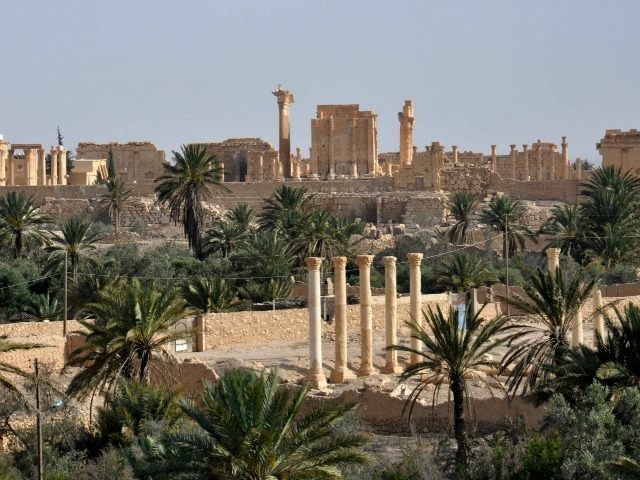The Islamic State (ISIS/ISIL) released their first video from Palmyra, Syria, which shows the city’s ancient ruins untouched for now. Those buildings and temples earned Palmyra the title of a UNESCO World Heritage Site. The group’s official media outlet uploaded the short video to YouTube.
The only ISIS members in the video are the ones guarding the historic amphitheater. The viewer only hears music, no voices or human activity.
“If it looks like Isis propagandists are taunting the international community with this Palmyra video, it’s because they are,” said Charlie Winter, a researcher with Quilliam.
Maamoun Abdulkarim, Syria’s antiquities chief, said the video shows no damage. However, he is scared the terrorist group will destroy the city and ruins at any time. Last week, Abdulkarim announced that officials removed many of the artifacts and antiques before ISIS captured the town.
“Before taking control of the city [by ISIS], a large number of the items were moved into Damascus, but thousands of the ancient items and sites still remain inside the city,” Abdulkarim stated at the time. “Many are heavy and big, so difficult to relocate.”
The city is one of the “most important cultural centres of the ancient world.” Palmyra, 134 miles north of Damascus, is considered an oasis, surrounded by beautiful palm trees. The city first appeared in record in 2000 BC, but became very important under the control of the Roman Empire:
It grew steadily in importance as a city on the trade route linking Persia, India and China with the Roman Empire, marking the crossroads of several civilisations in the ancient world. A grand, colonnaded street of 1100 metres’ length forms the monumental axis of the city, which together with secondary colonnaded cross streets links the major public monuments including the Temple of Ba’al, Diocletian’s Camp, the Agora, Theatre, other temples and urban quarters. Architectural ornament including unique examples of funerary sculpture unites the forms of Greco-roman art with indigenous elements and Persian influences in a strongly original style. Outside the city’s walls are remains of a Roman aqueduct and immense necropolises.
Since June 2014, ISIS terrorists document and brag about their destruction of these priceless areas. ISIS has consistently destroyed ancient artifacts or sold them on the black market. Militants have published videos and pictures of themselves blowing up tombs, shrines, museums, libraries, and churches. A video in March left the world speechless as it showed militants allegedly obliterating Christian artifacts. Baghdad museum director Fawzye al-Mahdi calmed nerves when he told the media the majority of the artifacts were copies, since the originals were taken to Baghdad. Unfortunately, the barbarians did destroy a few originals.
The jihadists insist the group demolishes these items because they promote idolatry. Yet, before they blow up the buildings, witnesses have repeatedly reported seeing the men leaving with artifacts and antiques a few days before the destruction. The group started with only a few dollars, but selling antiques on the black market made the Islamic State a billionaire organization.
“The destruction is their way of getting back at us [in the West],” explained Clemens Reichel, curator of Mesopotamia at the Royal Ontario Museum. “They know how much we value these historic places.”
He also believes ISIS only wants Syrians to identify with the Prophet Mohammed.
“The more important loss is to the Syrian people,” he continued. “This place is a big part of their national identity. It has linked Muslims, Christian, Druze… everyone. Its history is one thing they all have in common. That seems to be exactly what Islamic State wants to destroy their sense of historic identity.”

COMMENTS
Please let us know if you're having issues with commenting.